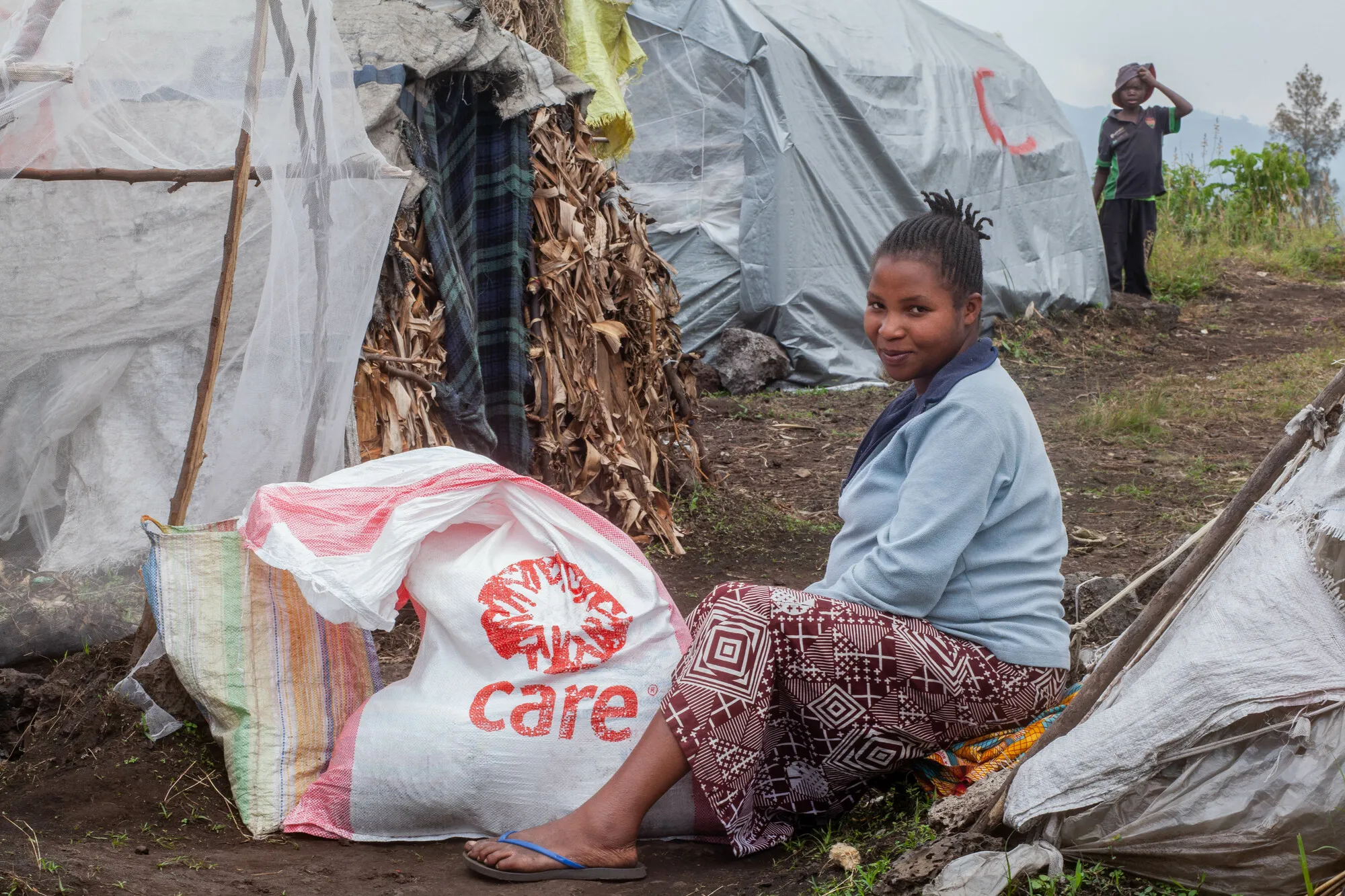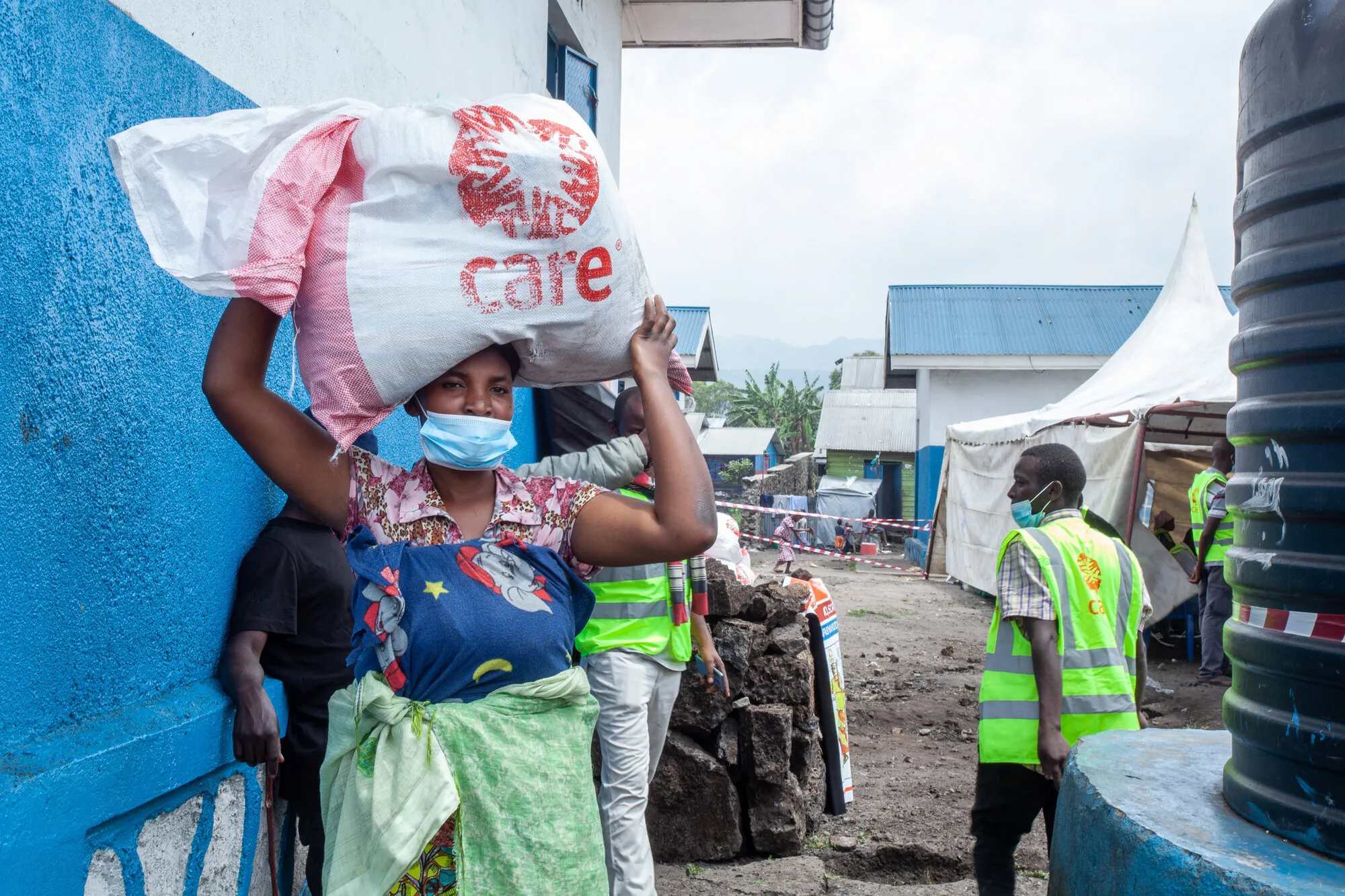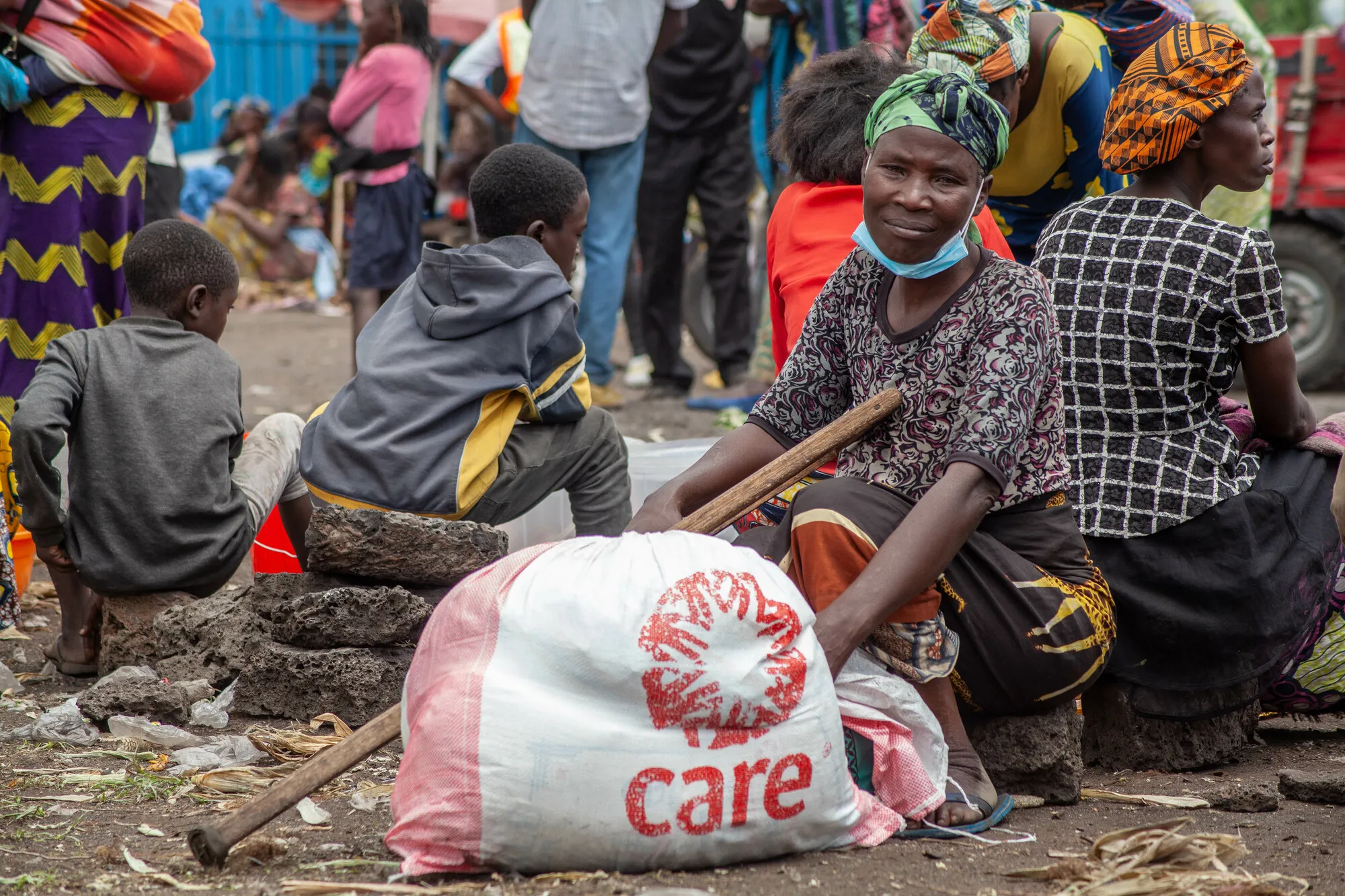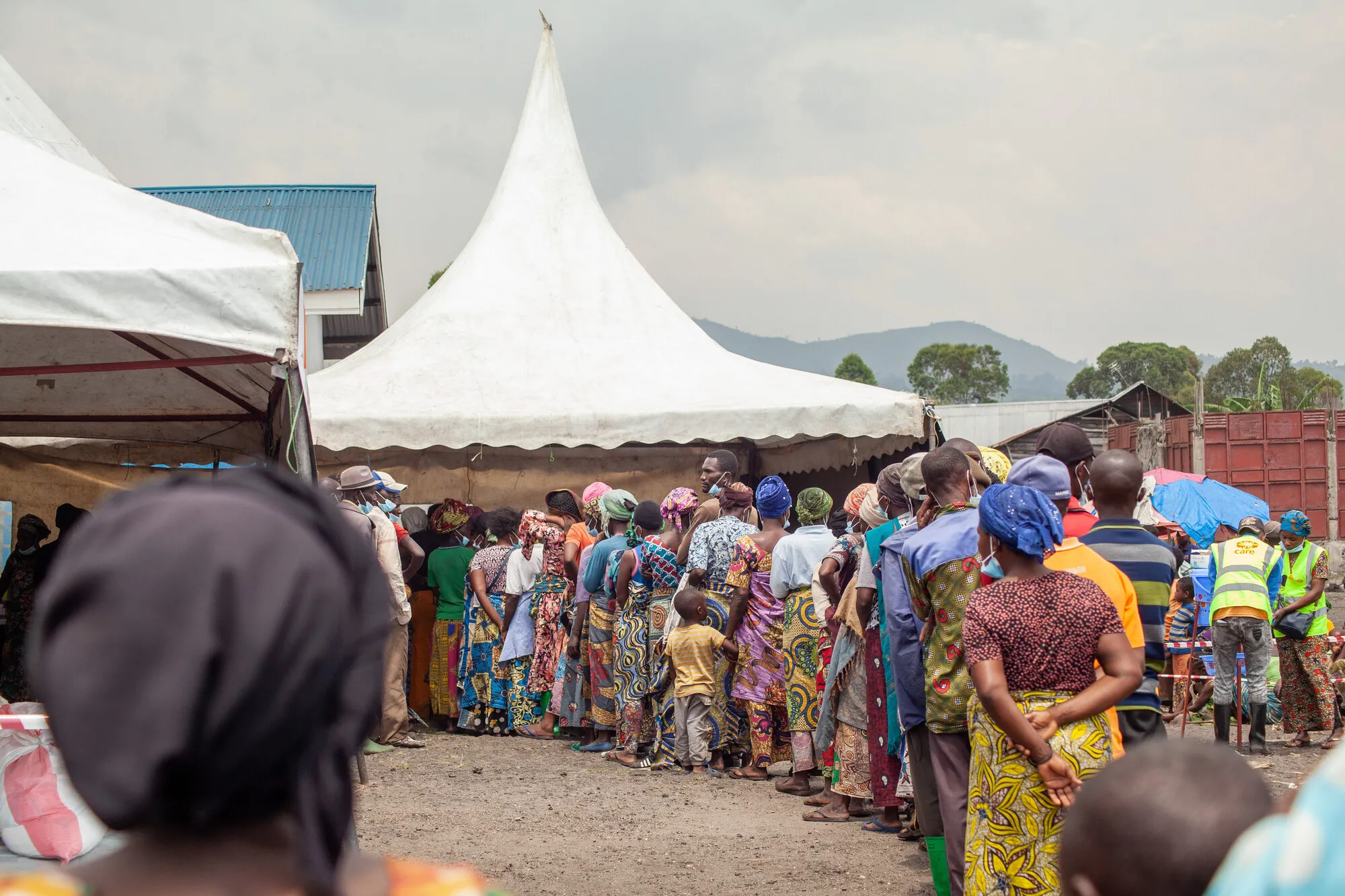“My husband asked me to leave because I am pregnant,” she says. “He stayed to observe the situation. My two children went to stay with my mother at another center. When I arrived in Goma, I learned that there was a camp for displaced people in Mudja, so I came here hoping to get some assistance, since I have nothing.”
In the North Kivu province of the Democratic Republic of Congo, villages have been left empty, farms are overgrown, and shopping centers are desolate as conflict rages on. Since March 2022, more than 600,000 people have fled their homes and sought refuge in collective centers such as makeshift camps, school yards, and church grounds in Nyiragongo, Kanyabayonga, Sake, and Goma.
Occupants of these centers, mostly women, now tell their stories of how they fled from their homes with only the clothes on their backs.




